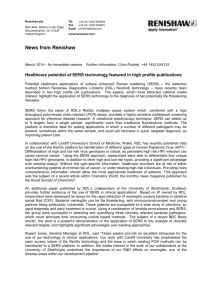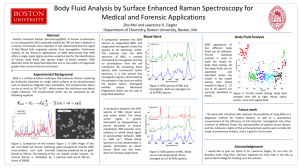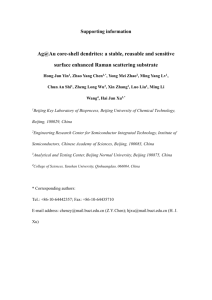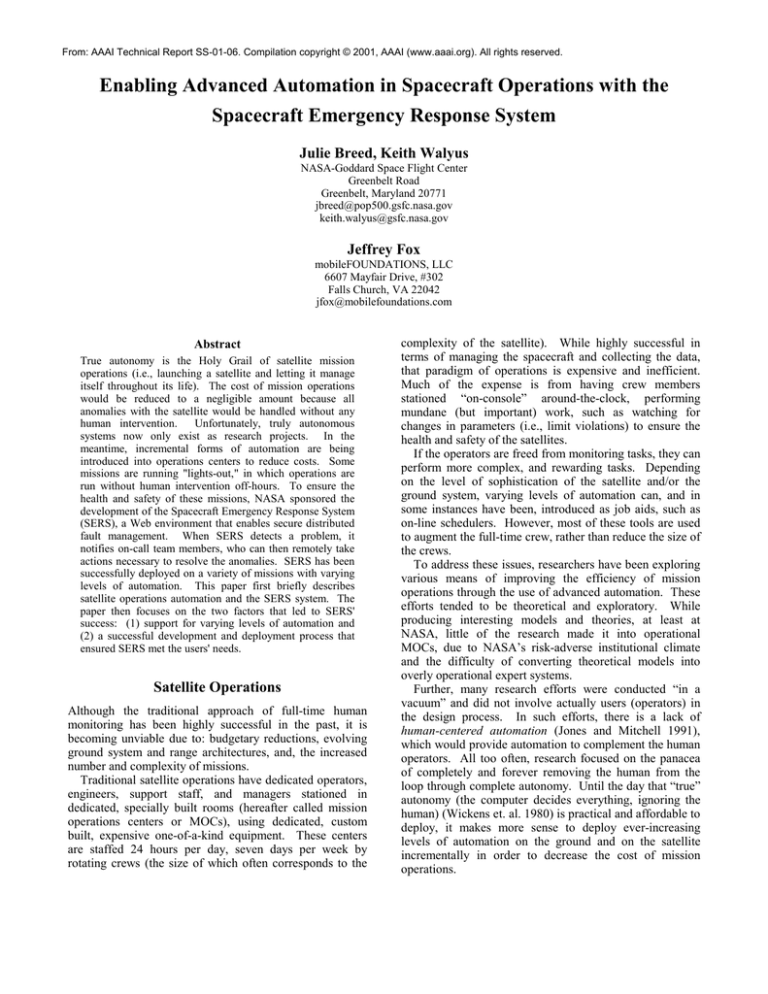
From: AAAI Technical Report SS-01-06. Compilation copyright © 2001, AAAI (www.aaai.org). All rights reserved.
Enabling Advanced Automation in Spacecraft Operations with the
Spacecraft Emergency Response System
Julie Breed, Keith Walyus
NASA-Goddard Space Flight Center
Greenbelt Road
Greenbelt, Maryland 20771
jbreed@pop500.gsfc.nasa.gov
keith.walyus@gsfc.nasa.gov
Jeffrey Fox
mobileFOUNDATIONS, LLC
6607 Mayfair Drive, #302
Falls Church, VA 22042
jfox@mobilefoundations.com
Abstract
True autonomy is the Holy Grail of satellite mission
operations (i.e., launching a satellite and letting it manage
itself throughout its life). The cost of mission operations
would be reduced to a negligible amount because all
anomalies with the satellite would be handled without any
human intervention.
Unfortunately, truly autonomous
systems now only exist as research projects. In the
meantime, incremental forms of automation are being
introduced into operations centers to reduce costs. Some
missions are running "lights-out," in which operations are
run without human intervention off-hours. To ensure the
health and safety of these missions, NASA sponsored the
development of the Spacecraft Emergency Response System
(SERS), a Web environment that enables secure distributed
fault management. When SERS detects a problem, it
notifies on-call team members, who can then remotely take
actions necessary to resolve the anomalies. SERS has been
successfully deployed on a variety of missions with varying
levels of automation. This paper first briefly describes
satellite operations automation and the SERS system. The
paper then focuses on the two factors that led to SERS'
success: (1) support for varying levels of automation and
(2) a successful development and deployment process that
ensured SERS met the users' needs.
Satellite Operations
Although the traditional approach of full-time human
monitoring has been highly successful in the past, it is
becoming unviable due to: budgetary reductions, evolving
ground system and range architectures, and, the increased
number and complexity of missions.
Traditional satellite operations have dedicated operators,
engineers, support staff, and managers stationed in
dedicated, specially built rooms (hereafter called mission
operations centers or MOCs), using dedicated, custom
built, expensive one-of-a-kind equipment. These centers
are staffed 24 hours per day, seven days per week by
rotating crews (the size of which often corresponds to the
complexity of the satellite). While highly successful in
terms of managing the spacecraft and collecting the data,
that paradigm of operations is expensive and inefficient.
Much of the expense is from having crew members
stationed “on-console” around-the-clock, performing
mundane (but important) work, such as watching for
changes in parameters (i.e., limit violations) to ensure the
health and safety of the satellites.
If the operators are freed from monitoring tasks, they can
perform more complex, and rewarding tasks. Depending
on the level of sophistication of the satellite and/or the
ground system, varying levels of automation can, and in
some instances have been, introduced as job aids, such as
on-line schedulers. However, most of these tools are used
to augment the full-time crew, rather than reduce the size of
the crews.
To address these issues, researchers have been exploring
various means of improving the efficiency of mission
operations through the use of advanced automation. These
efforts tended to be theoretical and exploratory. While
producing interesting models and theories, at least at
NASA, little of the research made it into operational
MOCs, due to NASA’s risk-adverse institutional climate
and the difficulty of converting theoretical models into
overly operational expert systems.
Further, many research efforts were conducted “in a
vacuum” and did not involve actually users (operators) in
the design process. In such efforts, there is a lack of
human-centered automation (Jones and Mitchell 1991),
which would provide automation to complement the human
operators. All too often, research focused on the panacea
of completely and forever removing the human from the
loop through complete autonomy. Until the day that “true”
autonomy (the computer decides everything, ignoring the
human) (Wickens et. al. 1980) is practical and affordable to
deploy, it makes more sense to deploy ever-increasing
levels of automation on the ground and on the satellite
incrementally in order to decrease the cost of mission
operations.
Virtual Operations
Operations Automation Tools
During the early 1990’s, budget cuts at NASA shifted the
focus of much of its operations automation research away
from pure research to applied research that focused on the
practical applications of leading-edge, to technology which
supports its new “smaller, faster, cheaper” approach to
mission operations. This led to a major change in the way
NASA’s Goddard Space Flight Center (GSFC) did
business. The operations staff now looked to the research
community for new tools and technologies to help them
reduce the costs of operations (Walyus, Green, and Mandl,
1998). At the same time, the researchers sought to embrace
the operators in the design of new technologies.
One of GSFC’s more detailed analyses of where it could
appropriately apply automation was part of its Virtual
Mission Operations Center (VMOC) program (Fox et. al.
1997; Moore and Fox 1993; Bane and Fox 1996). That
effort has been funded by NASA-GSFC's Advanced
Automation and Autonomy branch (Code 588). The results
led to the concept of building a virtual distributed
operations environment, in which cross-trained staff are
dynamically allocated to missions, as needed, from remote
locations. This concept is shown in Figure 1.
As part of its research, the VMOC effort discovered that
the government and the commercial sector had developed,
and was continuing to develop, a wide variety of “smart”
front-ends to interface with satellites in order to reduce
operations costs. Those tools ranged in capabilities and
“robustness.” Because NASA provides great latitude to a
mission’s staff to select its own ground system (In fact, a
mission may also choose to develop its own from scratch if
it can justify it), missions vary widely in the capabilities of
their front-ends. A few tools are discussed in more detail
later in this paper.
The VMOC team also discovered that while everybody
was developing “sexy” front-end tools, nobody was
focusing on the automation tools necessary to perform the
behind-the-scenes administrative, procedural, and alert
management tasks needed to allow for the reduction in
staffing (i.e., automated anomaly reporting). Concepts that
used very elaborate front-end expert systems were limited
in their utility by simplistic paging systems that could not
effectively and reliably communicate with the lights-out oncall operators. Since none of the systems were truly
autonomous, humans were expected to respond to
anomalous events outside the control of the automated
ground system.
Shared Center
Mission 1
Mission 2
Mission 3
Risks in Lights-Out Automation
On-Call Team
Figure 1. Virtual Operations Concept
Through the combination of intelligent satellites (at least
smart enough to go into self-protection or “safe hold”),
advanced front-ends (i.e., commanding, communications,
and monitoring), and intelligent monitoring systems, GSFC
has now moved into the era of “lights-out” operations for
unmanned satellites. During “lights-out” operations, the
ground segment is run autonomously during most routine
operations (i.e., one operator is still in the control center 95, Monday to Friday). Members of the satellite control
team need to be involved only in those tasks that are too
costly or too risky to automate. The rest of the time, the
team members are on-call in case of anomalies or
emergencies. When the automated ground system detects
anomalies, it immediately alerts the appropriate on-call
team members and provides them with the most current
information so they can assess the potential implications
and, when necessary, start to resolve the anomalies
remotely via wireless devices. However, achieving this
level of automation, required advanced operations tools.
At NASA, the introduction of advanced automation often
was seen as adding new risks because of systems "not
working quite as planned” during unforeseen events.
Lights-out operations cannot significantly degrade quality
of operations, just to save money. That is, a lights-out
environment must not lower the system’s overall
effectiveness. Improper implementation of automation can
lead to catastrophic consequences, including the loss of the
space vehicle. Such catastrophes are expensive and can
result in the permanent loss of data and loss of career. It
also opens the operating agency to harsh criticism (Trimble
2000).
Therefore, reducing human staff in favor of automation
increased perceived risks of what might happen during
anomalous events that may occur when there is no one in
the control center. When things go wrong, missions
deploying advanced automation need to be sure that
anomalous conditions are detected and that key personal
are notified in a timely manner so that they can react to
those conditions. On the “other side of the coin,” simplistic
schemes that simply page operators when anything goes
wrong can be a tremendous burden. There is little utility to
a system that forces the operators to return the MOC or to a
home PC to check on every alert notification when, more
often than not, problems are not significant.
The need for “back-end” automation to enhance the
capabilities of the front-end systems led to the VMOC
team’s development of the Spacecraft Emergency Response
System (SERS). SERS is a Web-based collaborative
environment that enables secure, distributed fault and
resource management (Breed, et. al. 1999; Fox, et. al.,
1999c, Fox, et. al. 1998, Fox, et. al. 2000, Fox. et. al.
199b). SERS incorporates the use of intelligent agents,
threaded discussions, workflow, database connectivity, and
links to a variety of communications devices (e.g., 2-way
paging, PDA's, and Internet phones) via commercial
gateways. When SERS detects a problem, it notifies oncall team members, who then can remotely take any
necessary actions to resolve the anomalies.
SERS accomplishes this via its core functions:
• “Intelligent” Workflow – SERS dynamically creates
teams, alerts team members, and facilitates their
communication and collaboration based on its
sophisticated knowledge base.
• 2-Way Wireless Communications – SERS not only
alerts team members by wireless device, but also
allows the team members to respond via the wireless
device to trigger additional actions and workflow
processes.
• Flexible Interface to Support Automation– SERS
communicates with and responds to triggers from
almost any front-end device or process (e.g., a signal
indicating an irregular heartbeat from heart
monitoring device or the notice of a plane crash).
This flexibility to interact with currently deployed
systems protects clients’ previous investments.
• Automated Reporting and Routing – SERS
automatically generates appropriate paperwork (e.g.,
a problem report or an update to a patient record)
based on the specific event. SERS also manages the
workflow processes around the routing of reports.
• Web User Interface – All SERS operational and
configuration functions are accessed via an
integrated, highly usable Web user interface.
The next two sections focus on two aspects of how SERS
enables lights-out operations through: (1) support for
varying levels of automation through a flexible interface
and (2) the notification of the proper on-call staff through
“intelligent” workflow.
SERS’ Flexible Support for Automation
As noted earlier, NASA uses a wide variety of front-ends in
its MOC. These tools vary in intelligence, robustness, level
of automation, and different ways identifying anomalous
conditions. SERS has been designed to support all of
them; from just performing adjunct automation tasks for
full-time manual operations (like for the Hubble Space
Telescope) to missions that are lights-out (like TRACE);
Figure 2. While a “truly autonomous” system would not
need any of SERS alerting capabilities, it could still benefit
from SERS reporting capabilities.
SERS communicates with the different types of frontends in various manners (Figure 3). In a non-automated
system, operators can trigger SERS functions manually via
a Web user interface.
Complete
Autonomy
No Human
In-the-Loop
Level of Automation
The Spacecraft Emergency Response System
On-Call
Supervisors
*
Supervisory
Control
SERS
Basic Computer
Support
Full Human Monitoring & Control
Manual Control
Level of Human Involvement
Figure 2. SERS Support for All Levels of Automation
Figure 3. Support through Flexible Communications
The Small Explorer class missions at NASA-GSFC are
using a fairly advanced, yet low-cost, front-end called
ITOS to enable a more capable lights-out environment.
The SMEX program provides frequent flight opportunities
for highly focused and relatively inexpensive space science
missions (NASA 2000a). ITOS is a suite of software
applications for control of spacecraft and spacecraft
components during development, test, and on-orbit
operations. It is a low-cost, portable Unix-based system
that may be functionally divided into five subsystems:
telemetry, command, control, database, and events
(Hammers 2000). ITOS is controlled via running sets of
procedures or “PROCS” via a command line interface.
Those PROCS can be grouped to run automatically for a
given period of time so that the operations can be run
unattended. Following a contact (pass with a satellite),
ITOS generates a log file that contains out of bounds
conditions, and then FTPs the file through a firewall to
SERS. SERS then parses the file and takes appropriate
actions based on what it finds in file.
Another type of front-end employs expert systems, like
the Altairis Mission Control System (Altairis MCS), a
distributed,
object-oriented
commercial-off-the-shelf
(COTS) command and control system (Aeroflex-Altair
2000). The Altairis MCS architecture is based on finite
state modeling as the fundamental technology for
automation. For NASA-GSFC missions that may use this
system, Altairis will send SERS critical state and state
change conditions (e.g., low voltage) via an email interface.
The actions SERS takes when it detects an out-of-bounds
condition or state depends on the “alert criteria” set by the
operators. The operators set these criteria via a point-andclick interface within SERS. For a log-based system like
ITOS, the operators define filters that contain lists of
mnemonics and events that either trigger, inhibit, or add
contextual information to a SERS alert. Figure 4, below,
shows part of a SERS alert criteria Web page that has a
subset of ITOS event used for the TRACE mission.
approach is not sufficient for mission operations because
with such a limited system there is no way to be sure that:
• The message was sent
• The message was received
• The message was received by the right people (based
on the problem)
• The message communicated what is going on
• The operator responded to the alert.
Instead, SERS' software agents send detailed data (i.e.,
notifications) to the most appropriate team members based
on the type and severity of the anomaly and the skills of the
on-call team members. SERS also allows the team
members to respond to the notifications from their wireless
devices. This unique capability ensures rapid response
since the team members no longer have to go to a PC or the
control center for every anomalous event.
Further, SERS allows those on-call team members to
start communicating with the system immediately via
advanced two-way communications (e.g., two-way pagers
and the telephone) or via the Web. This provides a closed
feedback loop. SERS knows when it sends an alert
message, when the message leaves the appropriate wireless
communications gateway, when it arrives at the wireless
device, and when the person responds to the message. For
important alerts, SERS can automatically contact back-up
personnel should the primary on-call person not respond
(via wireless device or web browser) in the appropriate
amount of time (i.e., the alert “rolls-over” to the next most
qualified scheduled person). A high-level view of the
workflow process is shown below in Figure 5.
Events
Alert
Criteria
Schedule
Team
Email
Pager
Phone
Operator
Pager
Email
Web
Phone
Response to Notification of Fault
Figure 5. Alert Notification/Response Workflow
This closed feedback, automated rollover, technique is
another way of reducing the risk of introducing advanced
automation. SERS tracks all the steps, and there is 100%
accountability of what happened, who responded (or not),
when, and how.
Figure 4. Partial Alert Criteria Form
SERS’ “Intelligent” Workflow for Alerting
A goal of SERS was to overcome the limitations of a
typical “911” alerting system that simply broadcasts a
canned message to a predefined list of people. This
Transitioning SERS into Operations
The first mission to use SERS was TRACE (Transition
Region and Coronal Explorer) (NASA 2000b). TRACE is
one of NASA-GSFC’s SMEX (NASA 2000a) satellites.
TRACE launched on April 1, 1998 with a mission to
explore the three-dimensional magnetic structures that
emerge through the visible surface of the Sun - the
Photosphere - and define both the geometry and dynamics
of the upper solar atmosphere: the Transition Region and
Corona (NASA 2000b). TRACE started out knowing it
would operate primarily as a lights out mission with a goal
of reducing the cost for nominal operations by 50%
(Walyus, Green, and Mandl 1998). And, like all the
SMEX missions, TRACE uses the ITOS system as its
front-end. The TRACE team knew that to achieve its lowcost objectives, it had to trade-off additional risk for the
cost savings promised by automation. However, the
mission planned to mitigate the risks of introducing lightsout automation through a well-structured integrated test
period and a gradual phase-in of the lights-out operations
(i.e., gradually reducing the number of operators in the
MOC).
While ITOS could run for a defined period on its own,
the team had no way of knowing if a problem occurred
while they were be away from the MOC. After surveying
the currently available state-of-the-art technologies, the
TRACE team decided that it need the features that a SERS
system would offer. But, since SERS was still just a proofof-concept, that meant taking a large risk. Upon selecting
SERS, the development team, and SERS’ sponsoring
research organization, worked together to ensure that SERS
would work “as advertised.” This took place as a multistep process of testing and “trust building.”
Pre-Launch Testing
Prior to launch, the SERS team worked closely with the
TRACE operations staff to convert its research tool into an
operational tool. This was done as part of a larger usercentered design process (Fox, et. al. 1997, Fox, et. al.
1999a). This meant transforming general proof-of-concept
features into specific functions required to support
TRACE. For example, the research tool demonstrated the
concept of SERS automatically generating anomaly reports
based on general criteria. Pre-launch, the development
team created specific forms for the TRACE mission. It
also produced the alert criteria filter form for ITOS. The
development of the specific features was a highly iterative
process, with the operators involved at every step. By
involving the users this closely in the design, they took a
level of “ownership” in the SERS system. This resulted in
an increased level of comfort and trust.
While user-centered design can significantly improve the
design of a tool, it does not alleviate the need for good oldfashioned software and systems testing. As such, SERS
went through months of independent formal regression
testing. The testing was based on simulations, using actual
ITOS data. This testing, as expected, raised new design
issues and revealed many new bugs. This testing continued
until no new bugs were discovered and all of found bugs
were resolved.
Launch and Post-Launch (Shadow Mode)
For satellites, most, if any, major problems will occur
during launch and the period immediately following the
launch as the various components get powered on and the
Flight Team transitions the spacecraft into its operational
state. It is important to have humans constantly monitoring
the satellite during this “shake-out” period. And this is
what was done for TRACE for its launch in April of 1998.
For the first week, the MOC was staffed 24 hours/day, 7
days/week. During that time, there was no “mission” need
for SERS. However, this time still proved very beneficial
for SERS. During this period, SERS was turned on to
monitor the TRACE satellite as if it was being operated in
lights-out mode (without anyone in the control center).
This is known as running in “shadow mode. Running
SERS in shadow mode:
• Demonstrated that the software would work
• Allowed for further debugging under actual
conditions
• Showed where the software should be refined for its
next release
• Built further trust in the system by the operators.
Thus, while SERS was not per se “operational” during
this phase, it was a useful time and a critical step forward in
the path toward acceptance.
Shift Reduction
Over the course of the next 3 months, the TRACE MOC
was transitioned into lights-out operations. First, operators
were removed from the evening shift, without altering the
operational activities performed by the spacecraft. For
example, although no personnel were present in the MOC,
the spacecraft was still autonomously commanded to
periodically transmit its onboard recorded data to ground
stations. During this time, the operators gained trust that
the system was operating correctly and that they could
depend on their automation software. Next, all of the
weekend shifts were removed. This now left the TRACE
mission in its long-term operations mode: one 9-5 shift, 5
days/week. This constituted the real shift into the longterm cost savings mode of operations, without the added
loss of any data or an appreciable increase in risk to the
satellite.
During this transition period, SERS was initially set up
to run without any filters. That meant that the operators
were paged for every out-of-bounds condition. Typically,
there were problems identified with every pass of the
satellite, so the operators received pages regularly
throughout the day. Most of the problems were minor and
had no impact on the satellite. The on-call operators still
reviewed the alerts, but didn’t need to respond to them.
This may seem like a waste, but it was important for the
operators to receive all the data until they felt comfortable
enough with SERS (and their satellite) to set up SERS to
alert them selectively. The down side of this approach was
that paging bills were very high during this period.
Full Functionality
At approximately 2 months, the operators set up their first
set of alert criteria in SERS, from which SERS would
decide who and when to send out alert pages. The alert
criteria were very simple and excluded only a limited
number of out-of-bounds conditions that would not have an
impact on the satellite. Gradually, more items were added
to the criteria to make more selective in the alerting. It is
interesting to note that during the first six to nine months or
so, the operators asked the SERS development team to add
or modify the alert criteria, even though to add to new item
was a matter of “simply” checking a box on a form.
However, over time, the operators set criteria on their
own. And now, they do it themselves exclusively. Figure 6
shows the downward trend in the number of alerts sent by
SERS for the TRACE spacecraft from the launch date
(April 1998) through December of 2000. At that point the
number of alerts approached a steady state. The downward
direction is not because the spacecraft had fewer problems
over time, but because the operators felt comfortable letting
SERS filter out the important or new events, based on their
criteria.
General Conclusions
Traditionally, NASA has been a risk-adverse organization
when it came to the introduction of automation in mission
operations centers. However, drastic budget cuts in the
early 1990’s forced a paradigm shift to exploring the
utilization of advanced automation to achieve smaller,
faster, cheaper missions.
The Spacecraft Emergency Response System (SERS) is
a web-based suite of tools that incorporates the use of
intelligent agents, threaded discussions, workflow, database
connectivity, and links to a variety of communications
devices in order to automate many of the control center
functions. SERS was designed to support varying levels of
“intelligent”
automation
of
satellite
monitor and control through flexible communication
mechanisms. This allows SERS to integrate easily into a
variety of missions operations systems.
SERS was derived from an experimental technology
created under NASA-GSFC’s Virtual Mission Operations
Center (VMOC) program. Successfully deploying SERS
so that it could fulfill its goal of supporting “lights-out”
operations required overcoming two large challenges. The
first challenge was transitioning a proof-of-concept
prototype into a production tool. This was overcome by
building a close rapport with the operations staff through
the use of a user-centered design process. The second
challenge was to prove that SERS could be relied upon to
free the operators from their control centers and work on an
on-call basis. This challenge was overcome through a
phased approach of slowly allowing the automation
software to take over more responsibility as the operators
gained trust in the system.
SERS has been a success for NASA-GSFC’s Advanced
Automation and Autonomy Branch, and is now or is
planned to be used by the following NASA missions:
TRACE, The Hubble Space Telescope, SWAS, HESSI,
FAST, MAP, IMAGE, EO-1, Triana, and Gravity Probe-B.
A typical NASA mission using a SERS-enabled ground
system generally needs only one operator working a single
shift 8 hours/day, 5 days/week. Prior to lights-out
automation, a typical satellite operations center employed 2
- 3 operators per 8-hour shift, 3 shifts/day, and 7
days/week. Thus, the proper use of automation translates
into savings of up to $1 million/year in operations costs.
However, another key measure of the success of
advanced automation in mission operations is the change in
attitude of NASA administration to using SERS and lightout automation. When TRACE proposed the concept back
in 1997, there was much scrutiny and skepticism. Today,
there are no major challenges to lights-out
E ven ts fo r T R AC E
300
250
200
Nu m b e r
o f Eve n ts
150
100
50
0
1
4
7
10 13
16 19 22
25 28 31
April
1998
De c e m be r
M o n th s S in ce L a u n ch
2000
Figure 6. Number of Events for the TRACE Satellite
automation at NASA GSFC. In fact, for a standard
mission, there would be more scrutiny for not using
advanced automation. While true autonomy (no humans
ever in-the-loop) is a worthwhile goal, a system like SERS
provides the reliability and the flexibility to support
increasing levels of mission operations until we reach that
goal.
References
Aeroflex-Altair Cybernetics Corporation Website. (2000).
Altairis Mission Control System Home Page.
http://www.altaira.com/Products/AMCS/amcs.html.
Bane, R. and Fox, J. A. (1996). The Design and
Implementation of the VMOC Prototype. The Fourth
International Symposium on Space Mission Operations
and Ground Data Systems: SpaceOps ’96, Munich,
Germany.
Breed, J., Baker, B., Chu, K.D., Starr, S., Fox, J., &
Baitinger, M. (1999).
The Spacecraft Emergency
Response System (SERS) for autonomous mission
operations. 3rd International Symposium on Reducing the
Cost of Spacecraft Ground Systems & Operations.
Taiwan.
Fox, J. A., Bane, R., Baker, P., Breed, J., and Baitinger, M.
(1997). Human Factors Techniques for Designing the
Virtual Mission Operations Center. The 7th International
Conference on Human-Computer Interaction, San
Francisco, CA.
Fox, J., Breed, J., Baitinger, M., Starr, C., Chu, C.D.,
Baker, P. (1999c). The Spacecraft Emergency Response
System: A Web-Based System Enabling Lights-Out
AIAA Space Technology Conference,
Automation.
Albuquerque, NM.
Fox, J. A., Breed, J., Baker, P., Chu, K., Starr, C. and
Baitinger, M. A.
(1998).
Web-based Emergency
Response Systems for Lights Out Operations. Fifth
International Symposium on Space Mission Operations
and Ground Data Systems: SpaceOps 98, Tokyo, Japan.
Fox, J. A., Donkers, A., Moe, K., Murphy, E., Pfister, R.,
Truszkowski, W., and Uehling, D. (1999a). User-Centered
Design of Spacecraft Ground Data Systems at NASAGoddard. 2nd International Symposium on Spacecraft
Ground Control and Data Systems (SCD II), Foz do
Iguaccu, Brazil.
Fox, J., Hoxie, M. S., Gillen, D., Parkinson, C., Breed, J.,
Nickens, S., and Baitinger, M. (2000). New HumanComputer Interface Concepts for Mission Operations.
Sixth International Symposium on Space Mission
Operations and Ground Data Systems: SpaceOps 2000,
Toulouse, France.
Fox, J. A., Starr, C., Chu, K., Baker, P., Breed, J., and
Baitinger, M. (1999b). Web-based Automated Reporting:
Saving Time, Money and Trees. 2nd International
Symposium on Spacecraft Ground Control and Data
Systems (SCD II), Foz do Iguaccu, Brazil.
Jones, P. M. and Mitchell, C. M. (1991). A Mechanism for
Knowledge-Based Reminding and Advice-Giving in the
Supervisory Control of a Complex Dynamic System. 1991
IEEE International Conference on Systems, Man, and
Cybernetics, Vol. 2, 1295-1300.
Moore, M. and Fox, J. A. (1993). The Virtual Missions
Operations Center. In Proceedings of the 7th Annual
Space Operations, Applications, and Research Symposium.
Houston, TX: NASA and U.S. Air Force.
NASA-GSFC Website. (2000a) SMEX Home Page.
http://sunland.gsfc.nasa.gov/smex/.
NASA-GSFC Website (2000b). TRACE Home Page.
http://sunland.gsfc.nasa.gov/smex/trace/index.html.
NASA-GSFC Website (2000c).
http://map.gsfc.nasa.gov/.
MAP Home Page.
The Hammers Company Website. (2000). ITOS Home
Page. http://www.hammers.com/ITOS/default.htm
Trimble, S. (2000). NASA defends failures.
Computer Week. Volume 14, No. 7.
Federal
Walyus, K., Green, S., Mandl, D. (1998). Lights-Out
Operations for the Transition Region and Coronal Explorer
(TRACE)
Using
Operational
and
Architectural
Approaches. In Proceeding of the Fifth International
Symposium on Space Mission Operations and Ground Data
Systems: SpaceOps 98, Tokyo, Japan.
Wickens, C. D., Mavor, A. S., Parasuraman, R., and
McGee, J. P. (1998). The Future of Air Traffic Control:
Human Operators and Automations. National Academy
Press. Washington, D.C.

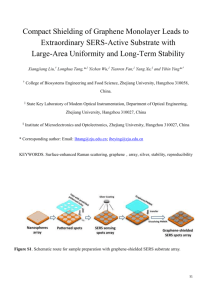
![[1] M. Fleischmann, P.J. Hendra, A.J. McQuillan, Chem. Phy. Lett. 26](http://s3.studylib.net/store/data/005884231_1-c0a3447ecba2eee2a6ded029e33997e8-300x300.png)


